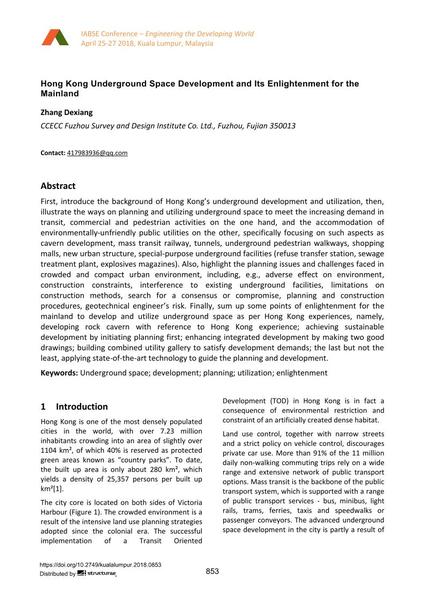|
Abstract:
|
First, introduce the background of Hong Kong’s underground development and utilization, then, illustrate the ways on planning and utilizing underground space to meet the increasing demand in transit, commercial and pedestrian activities on the one hand, and the accommodation of environmentally-unfriendly public utilities on the other, specifically focusing on such aspects as cavern development, mass transit railway, tunnels, underground pedestrian walkways, shopping malls, new urban structure, special-purpose underground facilities (refuse transfer station, sewage treatment plant, explosives magazines). Also, highlight the planning issues and challenges faced in crowded and compact urban environment, including, e.g., adverse effect on environment, construction constraints, interference to existing underground facilities, limitations on construction methods, search for a consensus or compromise, planning and construction procedures, geotechnical engineer’s risk. Finally, sum up some points of enlightenment for the mainland to develop and utilize underground space as per Hong Kong experiences, namely, developing rock cavern with reference to Hong Kong experience; achieving sustainable development by initiating planning first; enhancing integrated development by making two good drawings; building combined utility gallery to satisfy development demands; the last but not the least, applying state-of-the-art technology to guide the planning and development.
|

